8 Best Crossbow Scopes for Low Light in 2024 — Reviews & Top Picks
Last Updated on
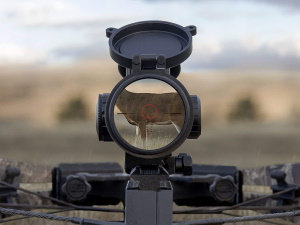
Crossbows are a wonder out in the field. They’re relatively easy to use and send arrows flying with the click of a button. But if you’re serious about hitting your target with a crossbow, you need a scope.
This is especially true when you’re hunting, since many animals come out at dawn and dusk, which are low-light conditions.
That’s why we took the time to create reviews of the best crossbow scopes out there for low-light conditions.

A Quick Comparison of Our Favorites (Updated in 2024)
| Image | Product | Details | ||
|---|---|---|---|---|
| Best Overall |
 |
Hawke Sport Optics 12221 Crossbow Scope |
|
CHECK PRICE |
| Best Value |
 |
Sightmark Core SX 3x32 Crossbow Scope |
|
CHECK PRICE |
| Premium Choice |
 |
Excalibur Twilight DLX Scope |
|
CHECK PRICE |
 |
MA3TY 1.5-5x32 Crossbow Scope |
|
CHECK PRICE | |
 |
Vortex Optics Crossfire Crossbow Scope |
|
CHECK PRICE |
The 8 Best Crossbow Scope for Low Light
1. Hawke Sport Optics 12221 Crossbow Scope — Best Overall
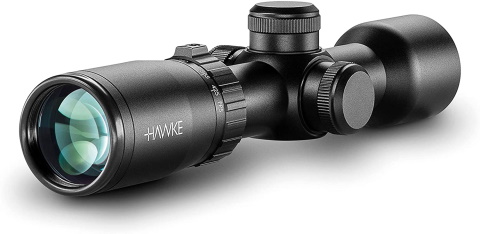
If you’re looking for a top-notch scope for your crossbow, it’s hard to beat the Hawke Sport Optics scope. While it’s a little more expensive up front, it comes with a lifetime warranty, so it’s the last time that you’ll ever need to buy a scope.
Moreover, you get fantastic clarity and a maximum shooting range of 100 yards. Additionally, you won’t have a problem hitting targets near or far with a magnification range that starts at 1.5x and goes all the way up to 5x.
The only real drawback on this scope is the 3″ of eye relief. While you’ll find crossbow scopes with harsher eye relief, 3″ is still on the shorter end of things.
- Awesome clarity with fully coated optics
- Maximum range of 100 yards
- Perfect magnification range: 1.5x to 5x
- Lifetime warranty
- More expensive option
- 3″ of eye relief is a bit harsh
2. Sightmark Core SX 3×32 Crossbow Scope — Best Value
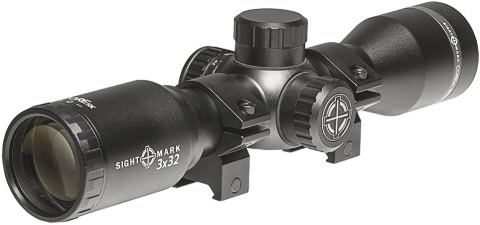
If you’re looking for the best crossbow scope for low light for the money, the Sightmark Core is a decent choice. But while it’s affordable, you’re definitely losing a few features at the lower price point.
For starters, while there are 11 different brightness settings, you only get one color. Second, the maximum range of this scope is 60 yards. While this is fine for most shooters, other scopes can do better.
Finally, this scope does not come with a warranty and only has one magnification range at 3x. This limits its overall versatility. If you’re in a bind, it’s not a bad choice, but if you have the extra money, you’ll get more features. Overall, for the money, this is the one of the best crossbow scopes for low light we have found this year.
- Affordable option
- 11 brightness settings to choose from
- Red illuminated reticle
- No warranty
- Only a 3x magnification range
- Maximum range of 60 yards
3. Excalibur Twilight DLX Scope — Premium Choice
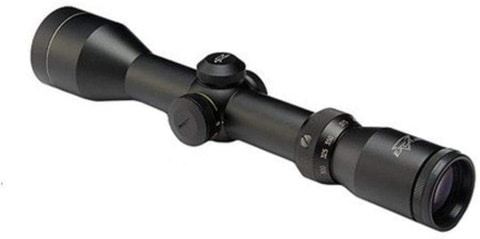
If money is not an object, then the Excalibur Twilight DLX Scope is the best premium scope for low-light situations. It brings in as much light as possible and gives you an illuminated reticle that makes shooting in low-light conditions a breeze.
Even better, you can set your own distances with the reticle, up to 100 yards, and the 3x to 6x magnification range makes it easier than ever to hit distant targets. It’s a more expensive option, but it’s a high-quality scope that you can enjoy for years to come.
- The twilight design gives you plenty of extra light
- Dual-color illuminated reticle, red and green
- Can set your own distances
- Great 3x to 6x magnification range
- More expensive option
4. MA3TY 1.5-5×32 Crossbow Scope

A top-notch choice that’s a little more on the expensive side is this MA3TY crossbow scope. It has the perfect magnification range for a crossbow, starting at 1.5x and maxing out at 5x. This lets you easily hit both close- and long-range targets.
Additionally, it has a dual-color illuminated reticle that makes it easier to shoot in low-light situations. But what keeps this scope from being higher on this list is the shorter 12-month warranty. While it’s better than nothing, at this price point, it should be a lifetime warranty.
- Perfect magnification range: 1.5x to 5x
- Dual-color illuminated reticle
- Parallax-free view
- More expensive option
- Only a 12-month warranty
5. Vortex Optics Crossfire Crossbow Scope
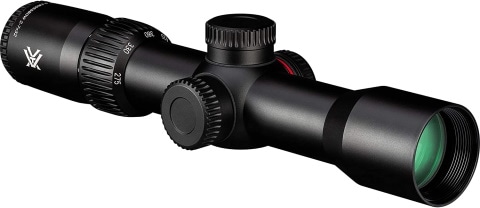
Vortex Optics makes great optics no matter what you’re mounting them to, and its Crossfire Crossbow Scope is no exception.
The scope has a maximum range of 100 yards and an impressive magnification range that starts at 2x and tops out at 7x. It features an illuminated reticle for low-light situations, and you have two colors that you can cycle through: red and green.
While it’s on the more expensive side, it does come with a lifetime warranty, so you’ll never have to worry about replacing it. This actually makes it one of the better deals in the long run, but you must have the money up front. The eye relief is a bit sharp at 2.7″, but it’s manageable with a crossbow.
- Lifetime warranty
- Amazing magnification range: 2x to 7x
- Up to 100-yard range
- Dual illumination reticle, green and red
- Clear optics
- More expensive option
- Sharp eye relief at 2.7″
6. Killer Instinct LUMIX SPEEDRING Scope
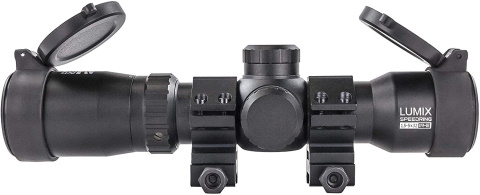
The Killer Instinct LUMIX SPEEDRING Scope is a top-notch choice that makes shooting a crossbow easier than ever. It has a maximum range of up to 100 yards, and the variable power scope starts at 1.5x magnification before maxing out at 5x. This allows you to hit any target no matter how close or far it is.
From there, it has an adjustable brightness reticle that you can shift between two colors, red and blue. But while the dots themselves are easy to see, the side dashes that are supposed to help with target acquisition aren’t illuminated. This can make it hard to see them in low-light situations.
- Adjustable brightness reticle, in red and blue
- Up to 100-yard range
- Perfect magnification range: 1.5x to 5x
- Perfect magnification range: 1.5x to 5x
- Good mix of performance and affordability
- Lifetime warranty
- Side dishes can be hard to see, especially in low-light conditions
7. TRUGLO Crossbow 4X32 Compact Scope
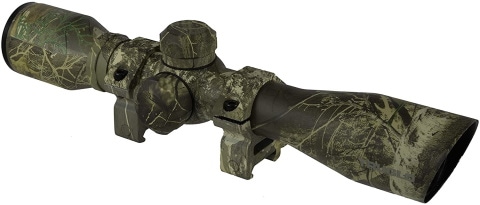
The TRUGLO crossbow compact scope has an easy-to-see design, especially in low-light conditions. TRUGLO illuminates every line of the reticle, which makes it extremely easy to line up your targets. Furthermore, the 4″ of eye relief is especially generous, and it comes with a lifetime warranty.
But the most significant drawback to this scope is that it only has one magnification setting at 4x. While that might be perfect for your shot, it’s not that versatile, and you can easily run into problems.
- Three color options to choose from
- A great mix of affordability and performance
- Generous eye relief at 4″
- Lifetime warranty
- Only one magnification setting, 4x
8. UTG 4X32 1″ Crossbow Scope
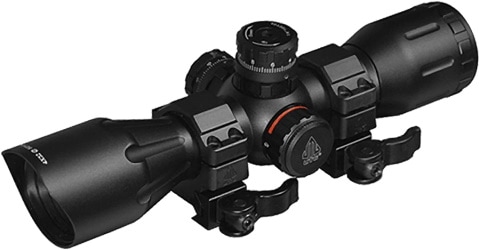
This UTG crossbow scope has 3.8″ of eye relief, which is good. It also features a unique reticle design that makes it easy to line up your shots, but it suffers from two fatal flaws.
First, you only get one magnification setting at 4x power. It’s not a bad setting, but it offers no versatility. Second, the maximum range for this scope is only 50 yards. That’s half the distance of most other scopes, and it’s simply not enough.
- Good 3.8″ of eye relief
- Easy to make windage and elevation adjustments
- Illuminated reticle with preset distance lines
- Only one magnification level: 4x
- Maximum range of 50 yards

Buyer’s Guide
If you’re new to crossbow scopes, you probably have a few questions. That’s why we created this comprehensive buyer’s guide, to clear up any potential confusion. You will know precisely what you’re looking for and have the confidence that you need to get the right scope the first time!
Sighting Your Scope
It doesn’t matter what scope you choose if you don’t take the time to sight it in. It’s easy enough to do, but it’s often a step that novices overlook. When you head out to the range, ensure that you set the targets at the appropriate distances and that you’re using the same setup that you’ll be using when you head out to hunt.
From there, all you need to do is take a few shots, get clusters, make adjustments, and shoot again! If you know what you’re doing, it’s an enjoyable experience that lets you spend the day out at the range firing tons of shots!

Illumination Matters
When you’re looking to shoot in low-light situations, you need a sight with an illuminated reticle. This lets you see the spot that you need to line up, and it can be the difference between making your shot and watching your arrow fly wide.
But not every illuminated reticle is made equal. There are two factors that you need to consider when looking at an illuminated reticle. For starters, you need to look at the color options. While a single color illuminated reticle is fine, most top options have at least two different color choices for you to choose from.
If the background of your target is the same color as your illuminated reticle, you can switch it and still see what you’re shooting. The second thing that you need to consider is whether you can control the brightness.
Too much brightness and the reticle will get blurry and you’ll drain your battery faster. But not enough and you won’t be able to see it in bright conditions. Having a reticle that you can change the brightness level on allows you to optimize it to the conditions and always get the best view.
But while illumination is essential, don’t overlook the brightness of the optic itself. Sights like the Vortex Optics and Excalibur Twilight DLX scopes excel at bringing in light, making it easy to see everything through the optics.
While seeing the reticle is necessary, you need to see what you’re shooting too.
How Much Magnification Do You Need?
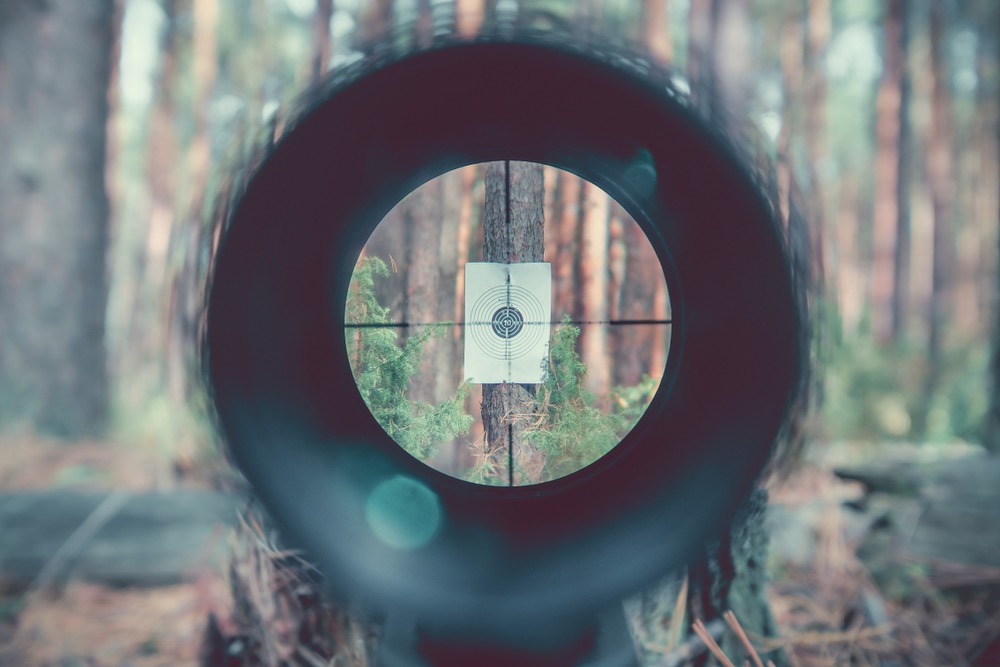
The amount of magnification that you need comes down to the distance of the target. For most crossbow applications, 100 yards is the maximum effective range, but even then, it’s far more likely that you’ll be shooting targets that are 60 yards away or less.
That’s why the maximum magnification range that you’ll need on any crossbow is 5x, though scopes that go slightly higher than this will make it a little easier to take long-range shots.
However, if you are taking a close-range shot, there is such a thing as too much magnification. As you look at objects that are close to you with a higher magnification, you can actually distort the image. This is called parallax, and it can be a significant problem if you’re shooting close-range targets.
That’s why scopes that offer 1.5x or 2x minimum magnification ranges are ideal, as you won’t have to deal with parallax for close-range shots, but you can ramp up the power if your target is further away.
What Is Eye Relief and How Much Do You Need?

Eye relief refers to the distance that you need between your scope and your eye to see through it effectively. If you don’t have enough eye relief when you pull the trigger, the recoil can send the scope straight back into your eye. This can leave a nasty bruise or worse, like a broken orbital socket. Not having enough eye relief can also make it difficult to comfortably look through your sight and line up your shot, which is why most shooters view more eye relief as better.
It’s also why we recommend at least 3″ of eye relief for your crossbow scope. While you can get by with a lower amount of eye relief if you’re an experienced shooter, it’s definitely easier if you have a scope that gives you extra flexibility.
Spend Now or Later, a Note on Warranties
When you’re looking at scopes, take the time to check out the warranty. A scope that offers a lifetime warranty is typically better quality because the manufacturer trusts its product and doesn’t expect that a ton of users will need to send it back for repairs.
On the other hand, companies that don’t offer warranties or only offer them for a limited amount of time don’t care if the product that you purchased breaks after a while. These products might be more affordable up front, but they likely won’t last forever, which means you’ll be spending more money down the road to replace them.
If you can afford it, opt for a scope with a lifetime warranty. When you’re still lining up and making shots a few years from now, you’ll know that it was worth it.
Windage and Elevation Adjustments

While you might not think of windage or elevation adjustments when you’re looking at crossbow scopes, you should. If you fail to account for wind or elevation, there’s a good chance that more than a few arrows will fly off course.
The good news is that each scope on this list allows you to make windage and elevation adjustments, though that’s not all you should be looking for. If you want to hit smaller objects, you’ll need a scope that offers smaller adjustments.
It’s all about MOA adjustments. One MOA equals 1 inch at 100 yards. But since you don’t sight most crossbow scopes at 100 yards, you’ll need to do a bit of math to make the proper adjustments.
The point is that you should know the intervals at which your sight can make adjustments. One MOA is considered a big adjustment, which is why each “click” of the turret will adjust to a smaller amount. Some crossbow scopes offer ½ MOA adjustments, while others provide ¼ MOA adjustments.
If you’re not worried about pinpoint precision, ½ MOA adjustments are fine, but if you’re trying to hit smaller targets or targets at farther distances, you’ll want a more precise mechanism to tune your shots.
Clarity Is King

When you’re looking at crossbow scopes, one factor should stand out above all the rest: the scope’s clarity. It might not sound like a big deal, but the last thing you want when you look through your sight is a fuzzy picture.
Top-notch scopes offer unrivaled clarity, especially at higher magnification levels. Keep in mind that if a lower-end scope is a little fuzzy at the lowest setting, it’s only going to get worse as you crank up the power.
When you’re taking your shot, you want everything to be as clear as possible, so don’t give an inch when it comes to clarity.

Conclusion
Finding the right crossbow scope for low-light situations can be overwhelming if you don’t know what you’re looking for. Hopefully, this reviews guide cleared up any questions that you might have about the scopes available on the market.
While some scopes are better than others, no matter which one you go with, you’ll have an enjoyable experience, where you can line up your target and avoid heading home empty-handed!
Table of Contents
- A Quick Comparison of Our Favorites (Updated in 2024)
- The 8 Best Crossbow Scope for Low Light
- 1. Hawke Sport Optics 12221 Crossbow Scope — Best Overall
- 2. Sightmark Core SX 3×32 Crossbow Scope — Best Value
- 3. Excalibur Twilight DLX Scope — Premium Choice
- 4. MA3TY 1.5-5×32 Crossbow Scope
- 5. Vortex Optics Crossfire Crossbow Scope
- 6. Killer Instinct LUMIX SPEEDRING Scope
- 7. TRUGLO Crossbow 4X32 Compact Scope
- 8. UTG 4X32 1″ Crossbow Scope
- Buyer’s Guide
- How Much Magnification Do You Need?
- What Is Eye Relief and How Much Do You Need?
- Spend Now or Later, a Note on Warranties
- Windage and Elevation Adjustments
- Clarity Is King
- Conclusion
About the Author Robert Sparks
Robert’s obsession with all things optical started early in life, when his optician father would bring home prototypes for Robert to play with. Nowadays, Robert is dedicated to helping others find the right optics for their needs. His hobbies include astronomy, astrophysics, and model building. Originally from Newark, NJ, he resides in Santa Fe, New Mexico, where the nighttime skies are filled with glittering stars.
Related Articles:
How to Clean a Refractor Telescope: Step-by-Step Guide
How to Clean a Telescope Eyepiece: Step-by-Step Guide
How to Clean a Rifle Scope: 8 Expert Tips
Monocular vs Telescope: Differences Explained (With Pictures)
What Is a Monocular Used For? 8 Common Functions
How to Clean a Telescope Mirror: 8 Expert Tips
Brightfield vs Phase Contrast Microscopy: The Differences Explained
SkyCamHD Drone Review: Pros, Cons, FAQ, & Verdict



